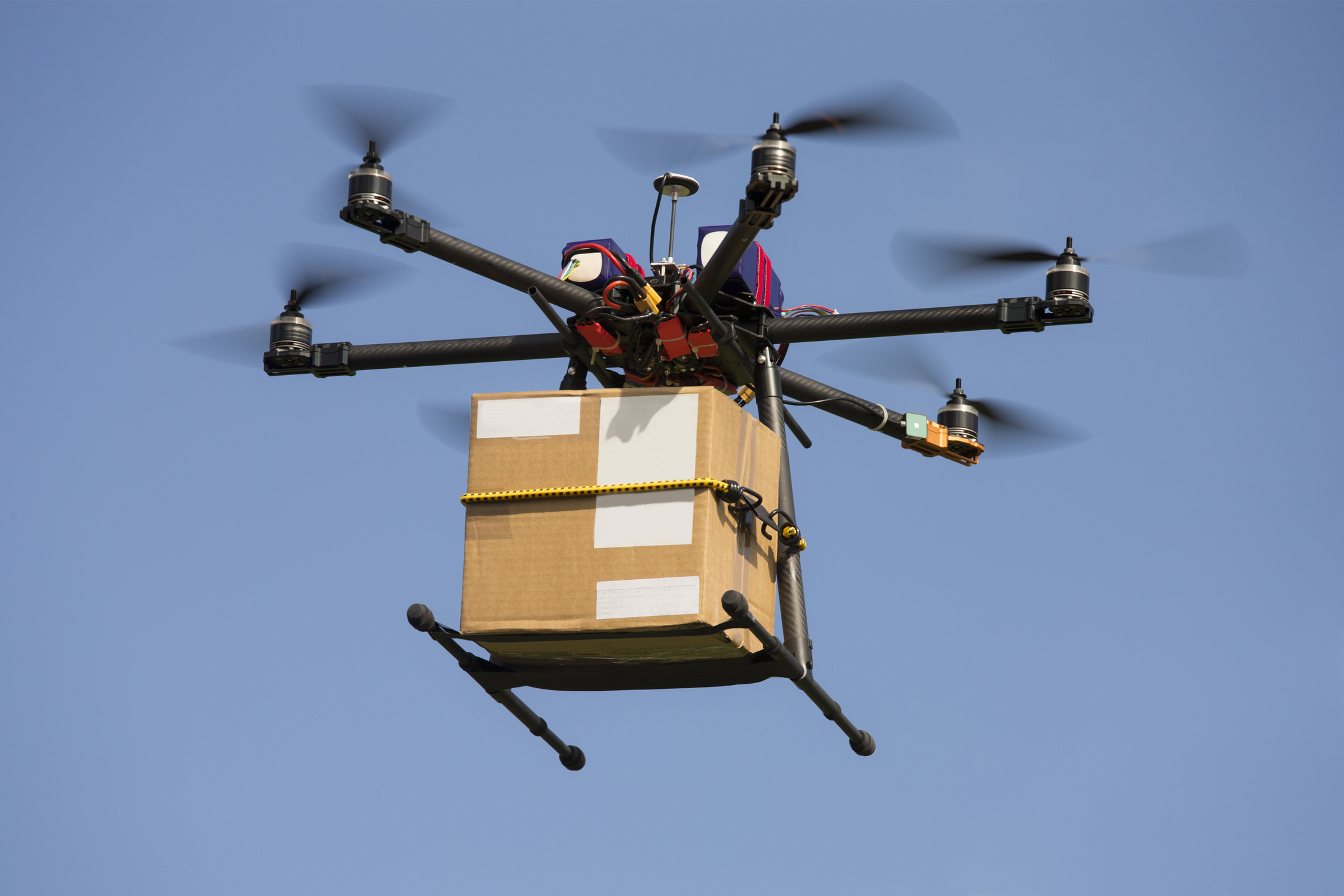
By Ben Sillitoe
Gap in the US, and Boots and Co-op Food in the UK have all made new investments in automation as the global coronavirus pandemic has taken hold.
Amazon, Ocado, and Eve Sleep, too, have continued their deployment of automation technology during the Covid-19 crisis. There are plenty of other example of retailers assessing the potential of robotics and artificial intelligence (AI), and introducing it within their operations in recent months.
Most of the above retailers are using automation in warehouses or delivery, but so many retailer processes – in stores, online, and throughout head offices – have the potential to be automated. For this week’s blog we wanted to assess what impact the coronavirus pandemic may have on retail’s relationship with automation.
Will retailers invest more in it to safeguard against future pandemics? Will there be more investment in it to enable a more managed return to work for human employees? How will it affect the various retail functions from now on? And is it simply just needed to cater for the growth in online retail we’ve seen during the coronavirus?
These were all questions we put to IMRG’s solution provider members, as part of our ongoing assessment of Covid-19’s immediate and medium-term influence on retail.
Current situation
In its ‘Future of retail operations: winning in a digital era’ report published in January, consultancy group McKinsey & Co paints a picture of retail on the cusp of wider deployment of automation. It dedicated a whole chapter to automation’s potential impact on supply chains, suggesting a growing shortage of labour, an explosion in demand from online retailers, and some intriguing technical advances were making automation a priority for logistics bosses, in particular.
It’s unlikely Covid-19 has reversed the situation. The leap in online retail sales and the increasingly frequent announcements about industry job cuts as company bosses assess short-term costs have arguably provided a business case for additional automation.
As Ciaran Bollard, CEO at eCommerce platform provider Kooomo, notes: “Automation was never light-years away for retailers in the first place, but the pandemic has massively accelerated change. What was thought to be ten years away may now only be five or six as the outbreak highlights the benefits of robotics to retailers and demands from consumers take a sudden and massive shift.”
Automation in delivery and fulfilment
Andrew Hoyle, head of automation at Wincanton, a logistics services provider, says greater automation can help retail warehouses deal with the recent growth in online sales, and support social distancing measures required to halt the spread of Covid-19.
“Automation of certain manual, repetitive processes through shuttle systems or robotic-led storage systems has clear benefits for smaller items at higher volumes, while technology to augment people adds real value where decision-making processes are less clear,” he adds.
“Shifting towards larger, fully-automated facilities takes time and significant investment. This may be the long-term approach for some businesses, however taking a modular approach to roll out automation can provide important gains earlier and ease the impact of transition.”
Meanwhile, Zach Thomann, executive vice president & general manager of PFS, an eCommerce solutions provider, predicts that retailers’ hygiene-motivated decisions to reduce the number of touchpoints when fulfilling online orders paves the way for drone technology.
“We anticipate an increased acceleration in adoption of drone technology across the eCommerce fulfilment operation,” he says. “That includes use of drones to automate operations within warehouses as well as drone use for delivering packages to consumers.”
Senel Sowerby, head of parcel management solutions, product marketing for Quadient, a shipping technology firm, adds: “Automation typically delivers increased accuracy in repetitive tasks, as well as enabling faster completion of said tasks – this results in tangible time and cost savings, which have been pivotal in driving adoption. One area in which we see big growth potential is the use of automation to support reduced contact delivery and returns.”

Marketing and eComm automation
Automation comes in many guises – it is not just robotics and big back-end machinery and systems that fall under this moniker. Retailers are also using automation to support email marketing, personalised eCommerce content, payment, and other processes.
For Rob Delijani, senior director of growth strategy at BounceX, a software company helping retailers identify online customers, automation will be particularly vital in new customer acquisition, marketing personalisation, and managing shipping expectations.
“With the impact of the coronavirus, retail automation will continue to shift to meet the demands and shopping styles being adopted by today’s consumers,” he remarks.
Automation is evidently creeping into many aspects of retail already. Be it in-store cleaning robots at Walmart in the US, or to aid purchasing and order management at Zara parent company Inditex.
Brian Strauss, vice president of solution engineering at Moxie, a customer engagement software business, talks up the process of “proactive automated guidance”, which his company provides through the form of on-website targeted messaging and live chat.
“It can help customers pick out difficult-to-fit-online items like jeans, help customers work the checkout process, and manage the relationship across multiple visits,” he argues.
For Michael Reitblat, CEO of Forter, the focus for his company is on helping introduce automation to prevent merchants falling victim to eCommerce fraud.
“At a time where every transaction is precious for retailers, delivering the best possible customer experience during online shopping and checkout is critical,” he says. “And yet, behind the scenes of their eCommerce websites, many large retailers are dependent on the incredibly labour-intensive process of manually reviewing transactions to detect fraud.”
Frazer LaChance, client development manager for the European arm of Lucidworks, a search and data company, says a focus on efficiency will be one lasting impact of the pandemic for the retail sector.
“Retailers have a major need (and opportunity) to automate the customer support experience to meet this online-only moment, and thrive in the future,” he says, adding that digital assistants have the power to maximise efficiency in the long term.
Mike Harris, vice president & general manager for the international division at Bluecore, an eCommerce marketing technology platform, suggests brands are now “completely dependent” on the strength of their direct-to-consumer approach. And he expects this will drive investment in automation.
“We will also see brands employing more sophisticated use cases through AI-powered automation in order to scale intelligent one-to-one communications,” Harris argues. “For example, a beauty brand might leverage this type of automation for replenishment, sending consumers perfectly timed communications when they’re running out of product.”
Conor McGrath, head of UK & Nordic clients at parcelLab, a parcel monitoring software company, offers a similar sentiment.
“Automation that speeds up the purchasing journey, especially in cases of repeat ordering such as the weekly food shop – basically anything that can recreate online the speed and ease of popping to the shop – should be prioritised and will be well received by shoppers,” he comments.

Summary
One thing we’ve seen during the course of the pandemic, and which has been remarked upon by industry leaders such as AO’s John Roberts and Tesco’s Dave Lewis, is retailers making radical changes in a short space of time.
Be it online video technology deployment, new distribution methods, or just a greater use of eCommerce in general, many retailers have innovated quickly in the crisis for the good of their businesses and to the benefit of consumers.
Malcolm Berg, UK vice president for sales at Stored Value Solutions, an organisation which supports and processes transactions on gift card programmes, says before Covid-19 arrived new tech encountered resistance from “entrenched ways of doing things”.
“Now, however, Covid-19 has forced broader use and acceptance of these technologies, accelerating their adoption curves in a way that has never been seen before,” he notes.
Gap’s greater use of collaborative robots in its US warehouses, and Co-op Food’s expanded fleet of delivery robots are examples of this in action. Just how pivotal the coronavirus is in prompting the extended use of automation in wider retail will be apparent soon enough.
By Ben Sillitoe
Published 02/07/2020


